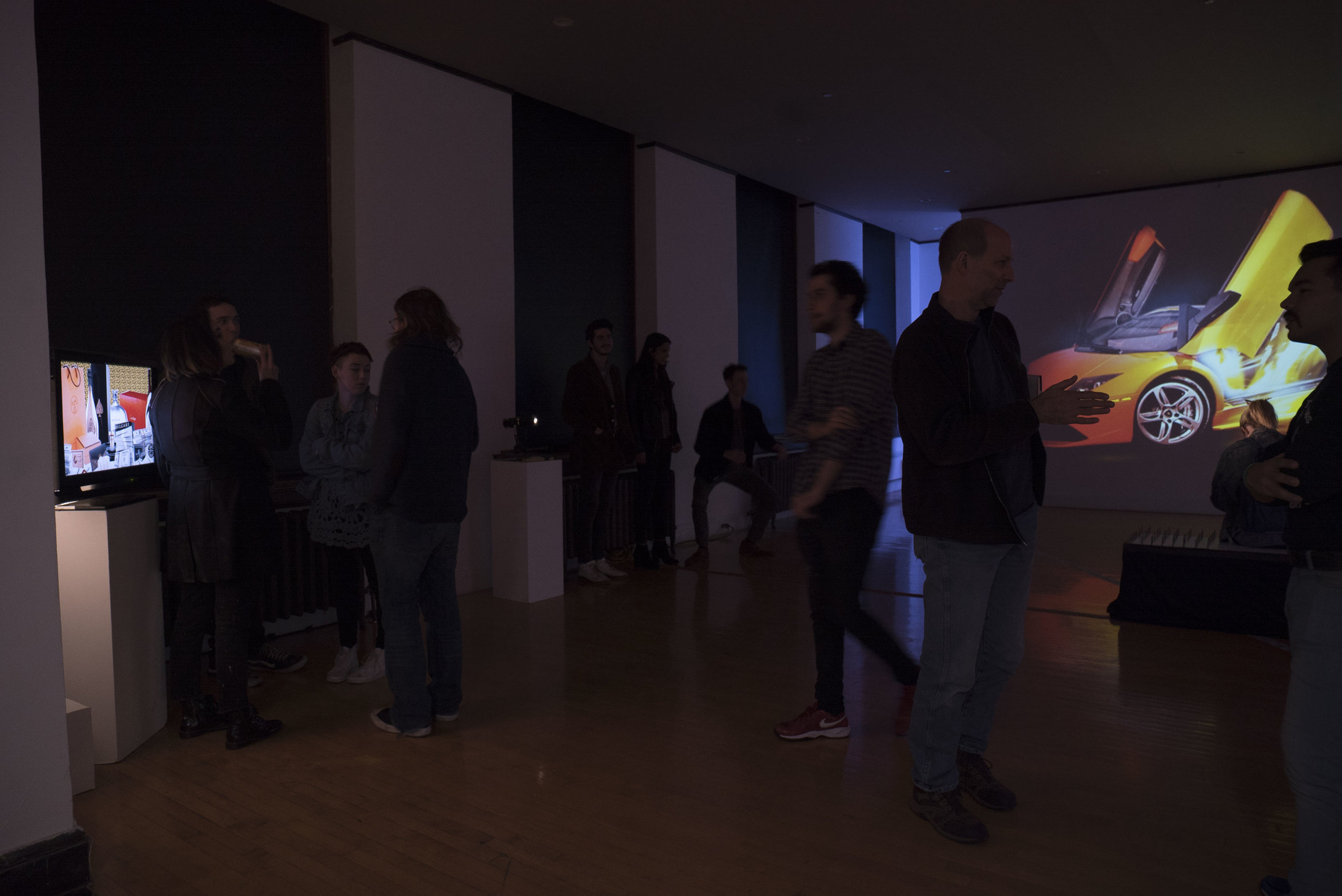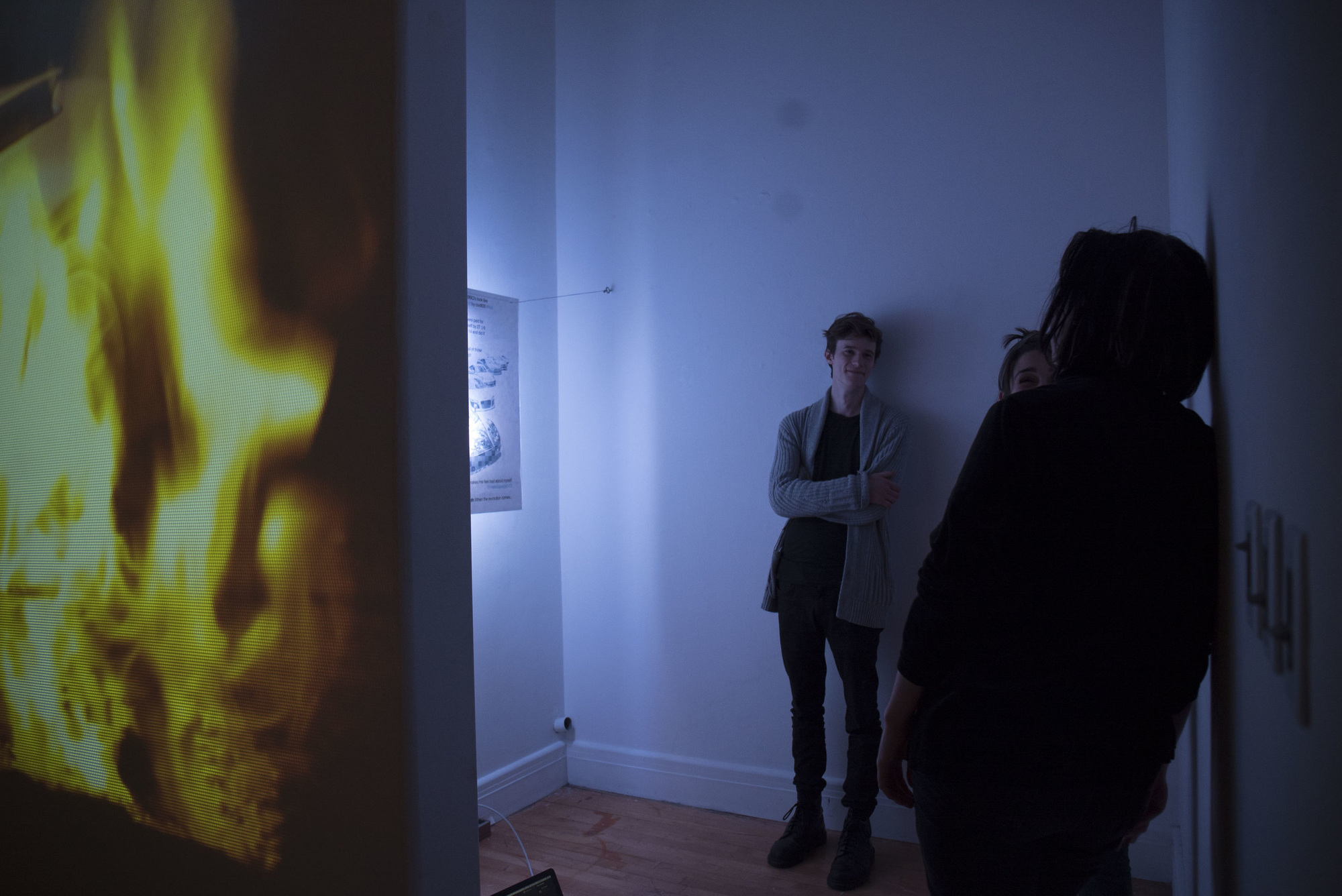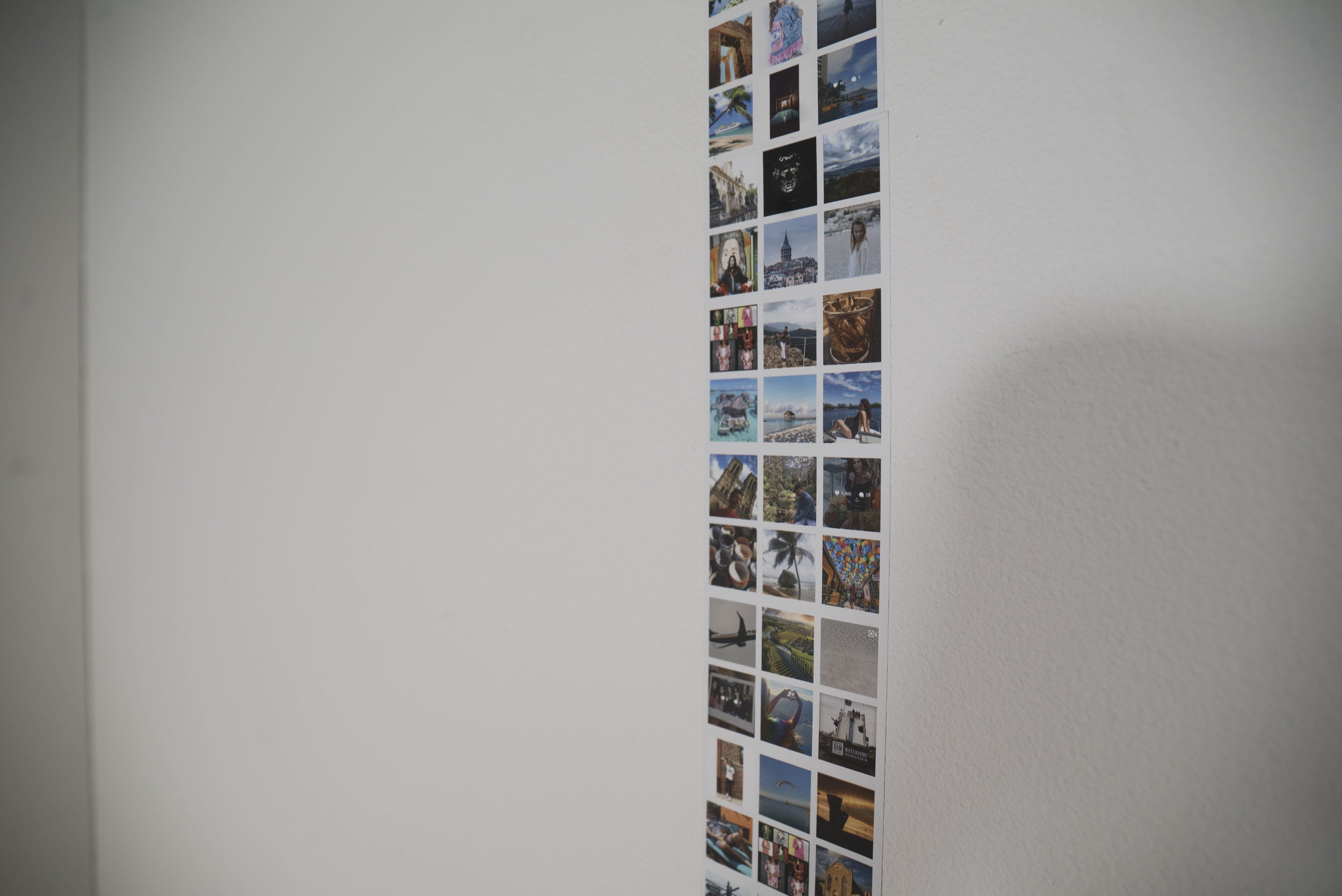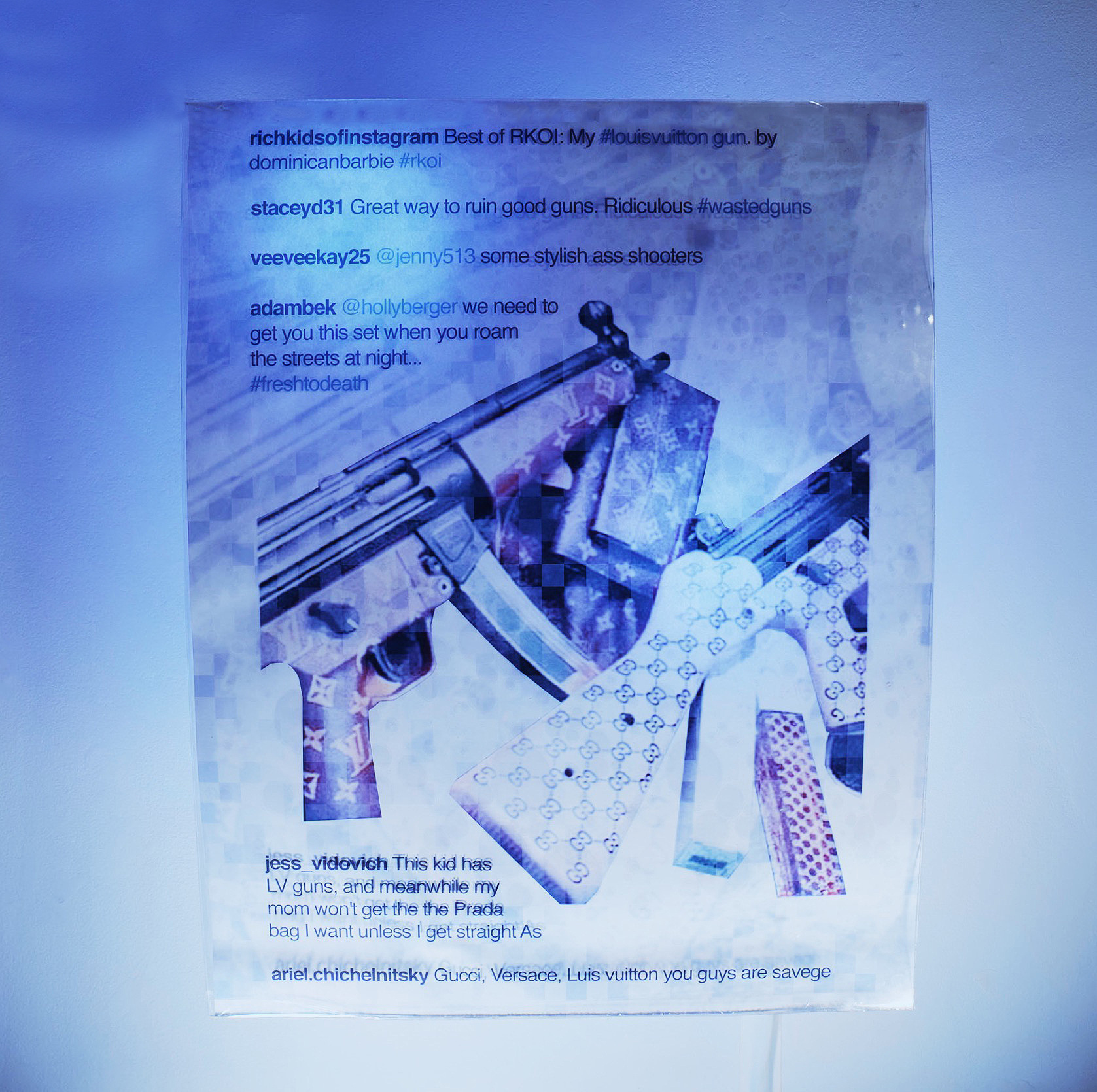Lamborghini Mercy
Lamborghini Mercy is an installation excavating images of conspicuous consumption and class warfare on instagram in early 2016/17 at the peak of influencer culture and a collective ignorance to the way big data, disinformation, and memes had just permanently shifted culture and politics.
The centerpiece of the installation is a visual poem, an ode to brief moments of proletariat uprising alluded to in some of the other works within the gallery. The rich and vivid animation exalts a Lamborghini set on fire by an Instagram follower fed up with a users frequent posts flaunting dozens of his luxury cars.
This event provides the context for examining the way the instagram posts function as mirrors revealing the growing class tensions. The installation is comprised of multiple works including posters, videos, and zines, using hyperbolic and playful imagery recontextualizing interactions and behavioural shifts online between economic classes that could seeming only have equal footing in the colosseum of algorithmic battle.
Series of images in video or print that mimic historical images of conspicuous consumption in Art History, but they are remixed with popular instagram content in order to reflect the modern zeitgeist. Physical posting of old vacation photos crassly dividing the gallery acknowledges the bombardment of leisure images is conspicuous consumption flaunted not through typical object consumerism, but by the ability to be free from proletariat labor.
Annotated Research Bibliography
Berger, John. Ways of seeing. British Broadcasting Corporation, 1972. Berger's text provided context for examining the way the instagram posts of old money youth functioned ideologically and semiotically.
Chomsky, Noam, and David Barsamian. Class warfare: interviews with David Barsamian. Oxford University Press, 2005. "Corporations with their political allies are waging an unrelenting class war against working people.” If we understand the 1% as allies to corporations through their support of tax breaks and protection of excessive assets, then we must in turn examine how they perpetuate class warfare. Additionally, if we continue this examination, then we must aim to investigate how this class warfare manifests on the internet. With the apparent influence of Marx, we are then encouraged to examine how the proletariat reacts with both working class fantasy as well as violence in language in action. These concepts are the underpinnings for including Readymade, which exhibits the arson of elite sports cars, in the Lamborghini Mercy installation.
Debord, Guy, et al. The society of the spectacle. Bureau of Public Secrets, 2014. "The spectacle is not a collection of images; rather, it is a social relationship between people that is mediated by images." This theory put forth by Guy Debord constructs a fabric that encourages an investigation into how the social ramifications of the instagram posts of the elite weave into our social relations, hierarchies, and perceptions of others and self.
Eco, Umberto. A theory of semiotics. Indiana University, 1997. Primarily, Umberto Eco's classification of signs that are intentionally produced as having a primary function with a secondary function or a combined function provided a lens to examine the instagram photo. The primary function may be to share or connect with a following. The secondary function may be to exhibit wealth, happiness, or an image of beauty that is considered "desirable" within the context of the American Dream. The combined function may be to serve as social engagement as well as placing a status within the ranks of said filter bubbles or social followings.Levine, Joel H. “The Sphere Of Influence.” Social Networks, 1977, pp. 433–446., doi:10.1016/b978-0-12-442450-0.50029-8. The sphere of influence of a business, organization or group can show its power and influence in the decisions of other business/organization/groups. With this framework applied to the behavior of conspicuous consumption post-internet, we can better understand the motivations of consumer behavior and both historical and contemporary image making
Mandel, Ernest. Late capitalism. Verso, 1999. When we combine the general theory of the “laws of motion” of the capitalist mode of production developed by Marx, with the concrete history of capitalism in the twentieth century, a lens to examine the way capital appears in the form of accumulated money in recent history. This in turn is what informs the image making of conspicuous consumption post-internet. This theory and examination of Late Capitalism provides historicity and context for attempting to grapple with the current modes of exhibiting accumulated capital. By definition, the search for profit is at the basis of all economically driven operations by owners of capital.
Neate, Rupert. “World's witnessing a new Gilded Age as billionaires' wealth swells to $6tn.” The Guardian, Guardian News and Media, 26 Oct. 2017, www.theguardian.com/business/2017/oct/26/worlds-witnessing-a-new-gilded-age-as-billionaires-wealth-swells-to-6tn?CMP=share_btn_link. This article includes both data about the growing economic gap and its history as well as some of the justifications for this gap including perceived benefits and motivations. The language and data utilized to fortify the thesis of this article provides an alternative perspective to the consequences of current economic disparity and a historical timeline to understand the context of the aftermath of this economic disparity.
Pariser, Eli. The filter bubble: what the Internet is hiding from you. Penguin Books, 2012. The recognition and examination of filter bubbles used by websites like twitter, instagram, and google provides groundwork for examining the sphere of influence for the images and symbols published by the elite on their social media.
Stoneman, Adam. “The New Conspicuous Consumption.” Jacobin Magazine, 6 Aug. 2015, www.jacobinmag.com/2015/06/rich-kids-of-instagram-berger-ways-of-seeing/. This article was the Jumping off point for the installation Lamborghini Mercy, 2017. The installation aimed to investigate conspicuous consumption by the children of the 1% on social media in relation to historic conspicuous consecution shown in European paintings and the American automobile industry.
Veblen, Thorstein. Conspicuous consumption. Penguin Books, 2006. The public display of economic power, specifically in late stage capitalism, solidifies the social status of the youth who have inherited the wealth of their parents despite having the social following and influence of media and celebrity fame.
Adorno, Theodor W, and J M. Bernstein. The Culture Industry: Selected Essays on Mass Culture. London: Routledge, 2001. Print. The Culture Industry is a term coined by Adorno and Horkheimer that proposes that popular culture produces standardized cultural goods in a similar was to factory mass production. These images and commodities are used to render the masses docile and passive to their economic oppression. In Lamborghini Mercy, this theory is used to question the societal impact of Instagrams mass produced images of vacation and conspicuous consumption. The resulting hypothesis is that this surplus of images seems to reflect a potential of the American Dream, where hard work will result in financial success and reward despite economic realities.








